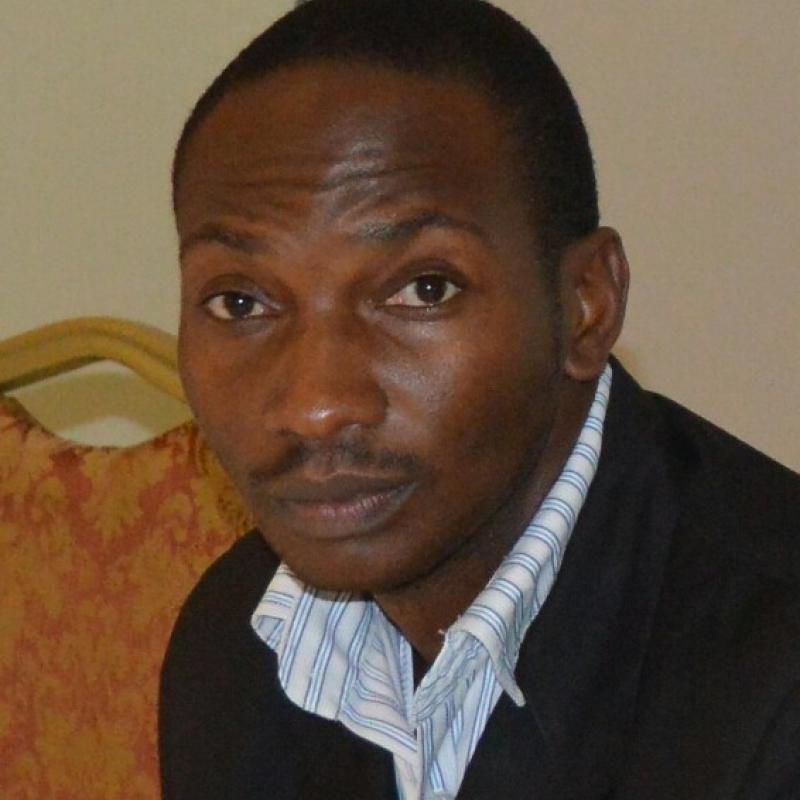A driven humanitarian and community development worker with over 15 years of experience in implementing, managing and directing establishment, strengthening and operationalisation of effective systems for planning, monitoring, evaluation, accountability, learning, quality assurance, and performance reporting at project, program and organizational level. I am passionate about work that ensures more results. My career goal is to proficiently enhance high-quality programming and realization of all performance expectations in the organization.
Eriasafu [user:field_middlename] Lubowa

Eriasafu Lubowa
Monitoring, Evaluation, Accountability, Learning, and Reporting Coordinator
Relief International
Sudan
Eriasafu Lubowa
Monitoring, Evaluation, Accountability, Learning, and Reporting Coordinator Relief InternationalHello experts!
Making everything is clear in terms of baseline, ToC, and CLA as put by Sylvain drives me to the idea of also basing efforts for building gender-responsive MEAL on findings of a Gender Analysis (of course guided by gender experts).
Eriasafu Lubowa
Monitoring, Evaluation, Accountability, Learning, and Reporting Coordinator Relief InternationalGreeting to you members!
In fact, you may agree that there are several agencies where Gender is a key component of their programming. However, these agencies still face challenges in institutionalizing gender-responsive MEAL. For instance, I am completing my dissertation titled “Factors influencing gender-responsive monitoring in non-governmental organizations…”. Based on the findings and our discussions here on Eval Forward, I can conclude that even humanitarian or development agencies whose programmes have a large component of Gender can face serious challenges in ensuring gender-responsive monitoring systems—be it at project or programme or organizational level). Therefore, I also agree with you, Kien that “The parameter of inclusion, effectiveness and efficiency are easier BUT GENDER RESPONSIVE IS SO COMPLICATED”.
I am thinking that a more Evidence-Based Approach should be used by the agency in order to strengthen gender-responsiveness at project, programme, and organizational level.
Eriasafu Lubowa
Monitoring, Evaluation, Accountability, Learning, and Reporting Coordinator Relief InternationalAs we continue to share ideas, think of how our ideas could be used to benefit the development of inclusive and gender-responsive MEAL systems for typical Food Security, Agriculture and Rural Development interventions.
Eriasafu Lubowa
Monitoring, Evaluation, Accountability, Learning, and Reporting Coordinator Relief InternationalHello fellow discussants,
Thank you for your ideas. I strongly believe that any one developing or strengthening their M&E system would find all these ideas very helpful. Please, allow me to add.
It is interesting to learn that “purpose and utility” should be considered at the onset when developing a MEAL system.
I believe regardless of other purposes of the MEAL system, “Reflection and Learning” are important aspects to consider when setting the purpose and utility of the system.
On the accountability part of the MEAL system, accountability processes and activities too would consider the various backgrounds within the targeted groups (the communities, or beneficiaries, or the crisis affected people). For example, the feedback and complaints mechanism should be accessible by ALL; hence, making the accountability system inclusive in a way.
Based on my experience, unless the program or project or the evaluation itself mainstreamed disability, elderly people, children, and different sexual orientations right from the design phase, it is common to see evaluation results not talking about such groups of people satisfactorily. This is also where the aspect of HRBA should come in strongly when developing and operationalizing MEL systems (as Serdar mentioned).
Certainly, all the ideas posted put together give a good understanding of how we can develop effective and inclusive MEAL systems, the constraints involved, and how to address them.
Daniel, you mentioned that “I believe such reflection comes in revealing the unknown through listening to and learning from those in need, not measuring those in charge - excluded and underserved communities”. Really, this emphasizes why we need to advocate for inclusive and gender-responsive MEAL systems.
Eriasafu Lubowa
Monitoring, Evaluation, Accountability, Learning, and Reporting Coordinator Relief InternationalDear Members,
Happy New Year!
Developing effective, inclusive and gender-responsive systems for monitoring, evaluation, accountability and learning (MEAL) is high on the agenda of development and humanitarian actors.
If a programme or project has a good monitoring, evaluation and learning (MEL) or MEAL system, an independent evaluation should take advantage of it. The evaluation can then focus more on the reflective and learning aspects and spend less time and resources on collecting data and information.
Programmes that take advantage of an effective MEL/MEAL function are designed to address the real needs of all people. Actors can measure performance, reflect and learn important lessons. However, often MEL/MEAL systems are limited to ensuring compliance and measuring outputs, outcomes and impact and rarely include cross-cutting issues, such as gender and leave-no-one-behind principles.
With this idea in mind, I proposed a discussion on the theme “developing effective, inclusive and gender-responsive MEAL systems”, in which 19 members participated over the course of two weeks or so. Opinions were invited on both emergency response and development, including agriculture and rural development, and focused on:
I would like to thank all participants. Your contributions made the discussion rich and successful.
Below is an outline of the main messages.
How can we develop effective and inclusive MEAL systems?
What are the constraints and how do we address them?
“Reflection and learning … comes in revealing the unknown through listening to and learning from those in need ‒ excluded and underserved communities ‒ not measuring those in charge.” (Daniel Ticehurst). Daniel’s assertion emphasizes why we need to advocate for inclusive and gender-responsive MEAL systems.
In conclusion, gender-responsiveness is complex. Even humanitarian and development agencies whose programmes have a large gender component can face serious challenges in ensuring gender-responsive MEAL systems, be it at project, programme or organizational level.